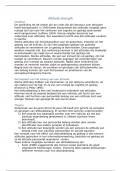Essay
Unit 5 Managing Networks (Part 1 Of 4)
- Module
- Unit 5 - Managing Networks
- Institution
- PEARSON (PEARSON)
Unit 5 Managing Networks (P1, P2, P3, P4, M1, M2, D1) Describe network technologies (P1) Outline the purpose of networking tools (P2) Identify emerging network technologies (P3) Explain the functions of network management (P4) Describe the potential impact of emerging network technologies (M1) Expl...
[Show more]









